|
Black Ghost Streamer Recipe
Originator Herb Welch Hook: Partridge Heritage Streamer Hook #2 9X Thread: Black Tail: Yellow Ewing hen fibers short and sparse. Body: Black floss Rib: Medium flat silver tinsel Throat: Yellow Ewing hen fibers tied sparse Wings: Four Ewing Scott Biron Signature Series white saddle hackles. Cheeks: Jungle cock eyes Tyers notes: This fly is tied with the wings on top of the hook shank. The tyer should be mindful of the transition area where the wings get mounted. If your body area is not smooth then it will kick your wings up at an undesirable angle. This fly can be tied in many sizes. I like the Partridge Heritage hooks because of the steel they are made with resulting in a very strong hook. If you are looking for the Ewing Scott Biron Signature Series they are available at the North Country Angler in NH call Steve at 603-356-6000 or at the Rangeley Region Sports Shop in Maine call Sue or Brett at 207-864-5615
113 Comments
I grew up in a suburb of Boston, Massachusetts. The town of Acton was known for its part in the Revolutionary War. One of its long-time residents was fly tyer Ray Salminen. He lived 2 streets over from my home and I attended school with his daughter.
Ray was known for his fly tying and friendships with many sportsmen and women, the likes included Joseph Bates, Megan Boyd and Leon Leonwood. Known for his Red Ghost streamer pattern he also had a few other which he developed and fished. I stumbled across one called the Belknap which was named after the Belknap region of New Hampshire. Ray developed this after catching a small minnow while exploring streams in northern NH. The pattern is documented in the first addition of Bates book “Streamers, Fly Tying and Fishing. I was sent a copy of a letter Ray wrote a friend in 2005 that updated the pattern and described in great detail the flies history and how it became his favorite pattern for NH. The photo below is the Bates recipe with the 2005 updates. Belknap Streamer Hook: Sprite S1800 #6 Body: 6 layers of flat gold tinsel Wing: 2 layers of Artic fox, the first long and the second half as long Topping: 2 strips of mallard Eye: Jungle cock eye Head: Yellow 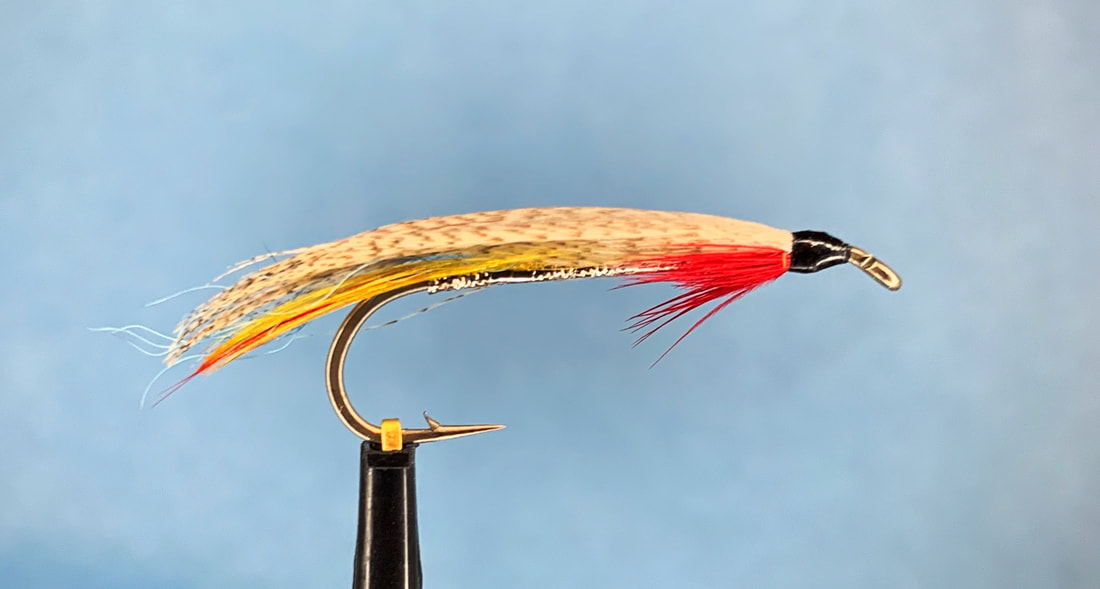 There has always been a lot of discussion about the fly called the Maynard’s Marvel here in New Hampshire. The reason is there are two flies that use the same name and they are very different. After some research, watching some tyers interviews and discussing some of the facts with noted fly scholars I’ve come up with this to share. The first photo is what I like to refer to as the Pittsburg NH Maynard’s Marvel. This fly is attributed to a guide from that area with the last name of Maynard. In Dick Surette’s Trout and Salmon Fly Index it mentioned it was popularized by Carl Stilphen from North Conway in 1931. My research has uncovered that our guide named Maynard was very popular and this was the fly he used while guiding. If one of the anglers wanted the fly at the end of the day he would take the one he gave them to fish with back and give them a slightly different version never giving away the real Maynard’s Marvel. Fished near the bottom this remains a very productive pattern. In Surette’s book he also shares that it is used to troll on Lake Winnipesaukee. The next pattern is the Maynard’s Marvel that often is referred to as the Golden Marvel and which has been attributed to Keene, NH tyer Ora Smith. Good friend Bill Thompson one told me this fly was often called the Keene Fly by the locals. In an interview I saw of Ora speaking about this fly he tells the story that another tyer, Bill Zimmerman actually came up with this pattern and named it after Doc Maynard who owned Maynard’s Camps on Moosehead Lake in Maine. In fact Ora would by these flies from Zimmerman for his personal use and one day when he went to purchase some he was told by Zimmerman that he stopped tying them. Ora goes on to say he bought the materials and started tying his own. Maybe this was the beginning of Ora’s tying career. I have a number of Ora’s tied Maynard’s Marvels and they all have slight differences, over time he stopped using the GPCs and replaced them with a synthetic material. 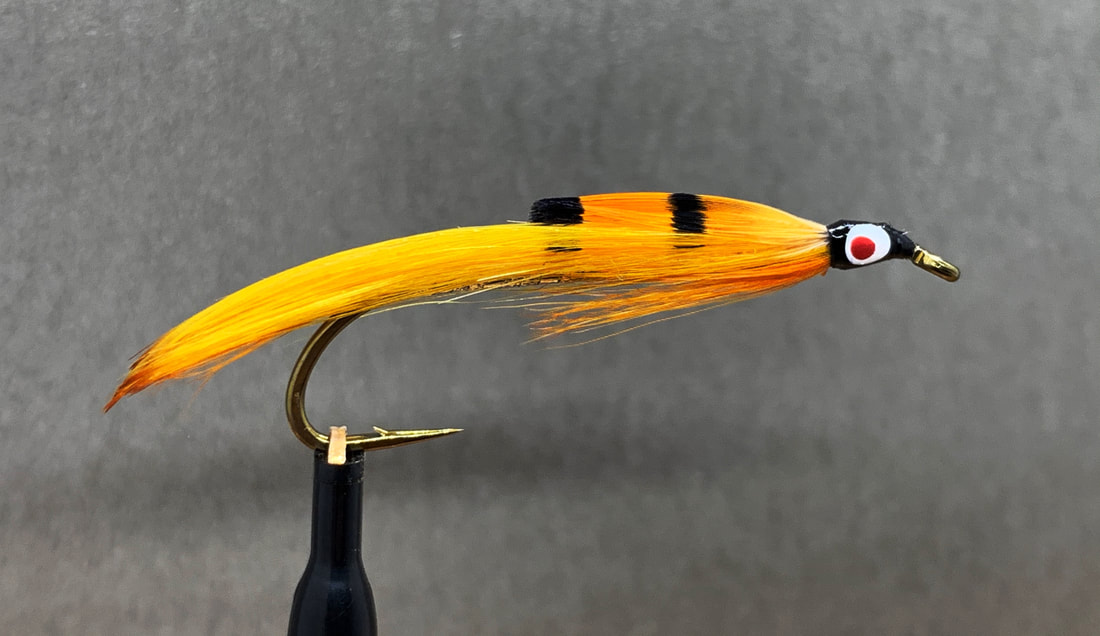 The third photo is Smith’s Marvel. This fly came about from a customer that wanted a Marvel styled fly with no shoulders and an orange tail and throat. The fourth fly is Mike Martinek’s Bloody Marvel. Tied in the Marvel style this fly is and excellent fly for trout. In some of the trout ponds in NH this is an excellent pattern throughout the season. 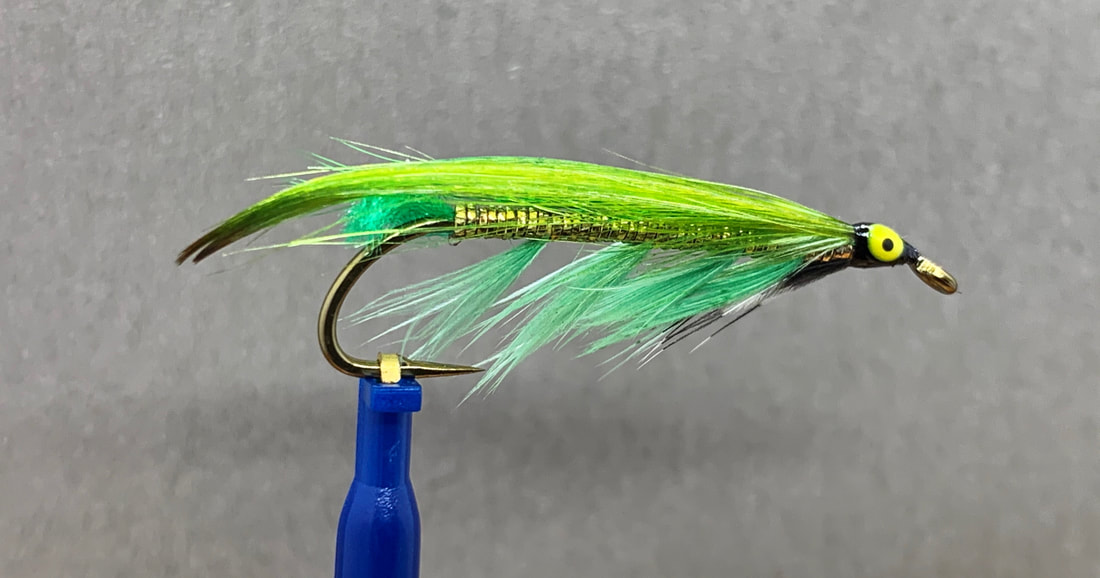 The last fly tied in the Marvel style is pattern called Kelly’s Hero. Martinek popularized this after seeing it at the 1969 Sportsmen’s Show in Boston. This too is an effective fly in the summer months. So if you were confused about the “Real Marvel” maybe this will help you out...until someone finds another Marvel style fly that will get a new discussion going. These flies have been tied on Sprite and Partridge Hooks and Ive used both Ewing hackle and hen feathers. The heads are all sealed with Solarez Bone Dry. Once the eyes are painted and dried I seal these again with the Bone Dry Plus Mollidgewock Brook Streamer
Created and tied by Scott Biron This streamer pattern is on a Partridge Heritage Streamer Hook using some specially dyed Ewing burnt orange streamer feathers. Named after a feeder brook to the Androscoggin River in the 13 Mile Woods area of Errol, NH. The Androscoggin River is a historic river that holds Brook, Rainbow, Brown Trout and Landlock Salmon. If one is lucky they can get one of each in one day resulting in an “Andro Home Run”. Partridge CS17-9X #4 Heritage Streamer Hook can be tied in smaller sizes also Tag: Copper flat tinsel Butt: Three turns of ostrich herl Body: Copper flat tinsel Rib: Copper ultra-wire small (leading edge) Black ultra-wire small (trailing edge) Belly: Sparse white bucktail beyond the bend of the hook, under the bucktail an orange dyed GPC almost to the hook point Wing: Sparse black bucktail, over which are 4 burnt orange Ewing streamer feathers Throat: Black hen followed by white hen Shoulder: Lemon wood duck Eye: Jungle cock nail Topping: 2 Peacock herls curving over the wing Head: Black I was asked to make a 24 streamer fly display for a friend of mine Danny Hashem, who wanted to give it as a gift. Great project and it came out very well. All of the patterns were New England based and several are some lesser know ones. On top of that I came across some Canadian postage stamps of historic fly patterns. One of the stamps was the Cosseboom. The Cosseboom is a very historic salmon fly pattern that is widely known as one of the more productive patterns. The fly was developed by John Cosseboom back around 1923. I happen to have a good friend who is a descendent of John Cosseboom and an avid fly angler and tyer. I figured who better to get one of the first day issued Cosseboom stamps with a fly I tied to go with it. After I tied the fly and posted a photo I was contacted by another fly tyer who said he had some of John Cosseboom's original floss that he used on the fly and send me some. I re-tied the fly, re-mounted it and gave a bit of history to my friend Chuck Cosseboom. This I have mentioned many times but I grew up fly fishing on the Androscoggin River in the town of Errol, NH. My grandfather had one of the first camps that he build at the base of Bragg's Bay. Its kind of cool but he was very friendly with the legendary game warden Harry Hurlbert and purchased the land for the camp from Harry. I remember a few times seeing Harry visit the camp and my grandfather. For me the river always was and still is a special place. My dad his brother and many other relatives all fished the river and learned of its unique history. When I came upon the Canadian fly stamps I also found one for the Androscoggin River and its first day issue. I turned that into a gift for my friend Rick Estes, who like myself has a lot of history with the big river. The challenge with this was to find some streamer patterns that were old and had some history to the river and or northern NH. Several years ago I uncovered a few which I tied and then I developed one of my own the 13 Mile Special. The plate now occupies a space in Rick's new fly tying room. I have several new blog posts up on the main Partridge website. Allan Liddle, Fred Klein, Umberto Oreglini and myself all have some excellent tying posts. Worth a quick visit and you just may learn a new technique or find a fly that will work for you. Follow this link directly to the Partridge Blog page www.partridge-of-redditch.co.uk/blog 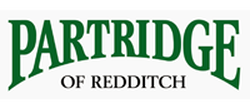 I received some great news yesterday that I've been placed on the Partridge of Redditch Pro Team on the United States side. Honestly, I'm feeling lucky that they selected me for this. Having used Partridge hooks for some time now I really feel they are superior and offer a wide selection that covers everything the fly tyer might look for. "Out of the mouths of babes", often reveals the truth. Several weeks ago in a beginner fly tying class I was instructing we passed out hooks to tie on. We were tying a small streamer using a Partridge Heritage Streamer Hook. One of the students had arrived with his own tools and a box of materials. He decided to use his own hook which unfortunately ended up breaking when he started tying. His hooks were old and most likely were stuck in a box somewhere to begin to rust and weaken. He said he had dropped the hook we gave him and didn't want to get behind so he used one in his box. Often the fear of getting behind in a beginners class is the number one issue a new tyer faces. We gave him a new hook and the first words out of his mouth was, "wow this hook is way better than what I was using". I enjoy it when the students help reinforce the benefits of the products we use in class. I love tying on the Partridge Heritage Streamer Hooks and you can see some examples in this blog. However I don't limit myself to only their streamer hooks. I use their wet fly hooks for tandem trolling flies. When I began tying flies back in the 1960s I learned how to tie Catskill Dry Flies and for those I use both Partridge and Sprite hooks. Recently I made a salmon fly plate using Partridge Hooks. A friend of mine is a direct descendant of John Cosseboom who was the originator of the Cosseboom Salmon fly pattern. I did a series of the Cosseboom's for him. All but one of these fly photos in this blog were tied using Ewing Feathers. They are superior and combined with the Heritage Streamer Hooks they look great and perform well. Someone will ask about the one tandem that uses bucktail instead of feathers for the wing. This is a fly that was effective on Lake Winnipesaukee, this was called the Winni Jock Scott Tandem. The pattern was given to me by an angler who had outstanding results with it. The Partridge Wet Fly Hooks in #4 & #6 work great when tying this. Article that was recently published by the American Museum of Fly Fishing www.amff.org/purple-smelt-history-lesson/ I get asked a lot about fall fly patterns. There are a lot of great patterns out there that work in the fall. However as my friend Rick Estes always reminds me..."in the end its up to the fish". For me the fall brook trout like bright streamers. Patterns with orange, yellow, red and yes often blue work. The patterns that work are tied on #2-4 7x hooks. I like the Partridge Heritage Streamer Hooks, they are stout and can handle the beating the spawning fish dish out. I often share with tyers who ask me about the hook size, the larger patterns often catch the largest fish....at least in the fall. Two effective patterns are the Orange Sunshine and the Allagash Lake. They fit the bill color wise with orange and on the Orange Sunshine I use a bleached grizzly over the orange. The Allagash Lake uses a smokey grizzly. All the feathers come from Ewing Feather Birds. This month Ewing's Grizzly of the Month color is bleached grizzly and I can see myself using this on a number of patterns. Off the subject a bit but recently while I was tying at the American Museum of Fly Fishing a friend was looking for that exact bleached color for some saltwater patterns. Good luck fishing this fall. I'll post a few more patterns real soon. If you need the recipe just email me. [email protected] About once a year I sit down and tie up a handful of these flies. Usually I end up with two and the friends I fish with are the beneficiaries of the remainder. This is a true New Hampshire pattern which was originated by Bob Broad. Bob ran the Brown Owl Tackle Shop in Errol, NH. Most of what I have learned about this fly has come through my good friend Rick Estes. I like to tell him that he ties this fly the best and each time I sit down I look at his to get mine just right.
The fly is to be fished in the surface film, imitating a struggling adult stonefly which hatches in late June and July in the Errol area. This hatch occurs right at dark and beyond. It is also seen in the Connecticut River in Pittsburg, NH. My friend Chuck Cosseboom uses these on the Magalloway River with great success. These stones are very large and I often make a few in size 4 and then in size 8. One of the common mistakes of this fly is to over dress it. This often occurs if you use too much bucktail for the collar. Additionally if you flare the bucktail too much it will end up in a less than desired result. I tie my bucktail in on top of the last 3 wraps of the oval gold tinsel and then I touch the tread with varnish and lock the fibers in. As the varnish sets I pinch the bucktail to get it to lie more parallel to the hook. Over the years I've looked for the right color grizzly hackle for the fly and recently I found it in a Ewing Feather Birds Brown Grizzly Hen. Years ago I remember standing on the dock of my grandfathers camp just below Bragg Bay on the Androscoggin River in Errol. Just at dusk (and if you could handle the black flies) we would see trout take these stones floating in the surface film. It's one of the essential NH patterns.....never go north without it. Hook: Partridge 4-7x (you can tie these up to a size 4 but 6 and 8 are the most common) THREAD: BROWN (6/0 DANVILLE #47) BODY: Oval gold tinsel, Collar: Sparse yellow buck tail from the brown side of the tail near the rump end, extend the tips slightly beyond the bend of the hook Wing: Teal flank feather, tent style to slightly beyond the bend of the hook, (roll the teal in your fingers before tying it in) Hackle: Soft brownish grizzly, originally wrapped like a collar and trimmed on top. Head: Brown thread |
AuthorScott Biron is a fly tyer from New Hampshire. Archives
December 2023
Categories |
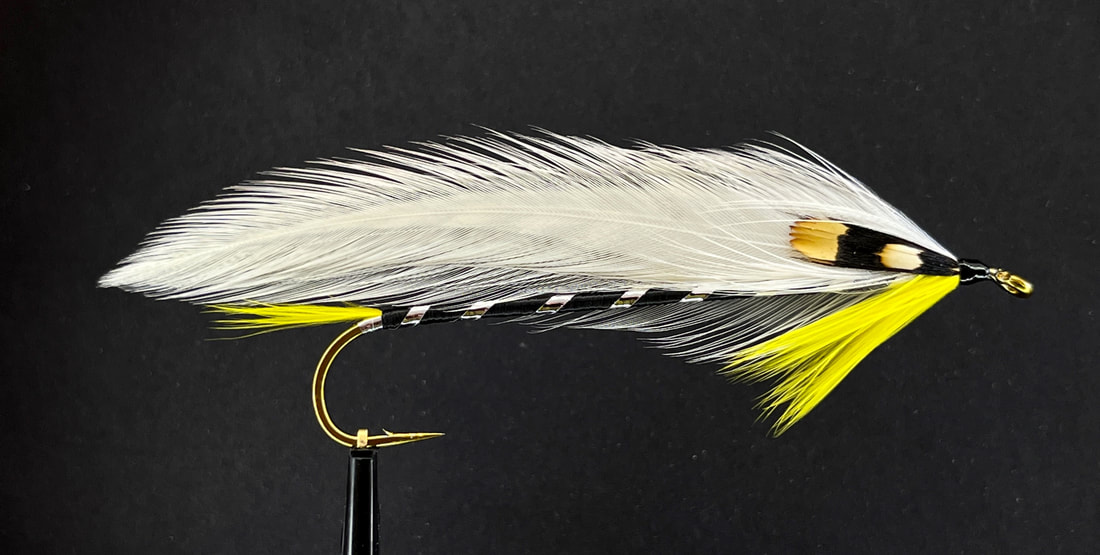
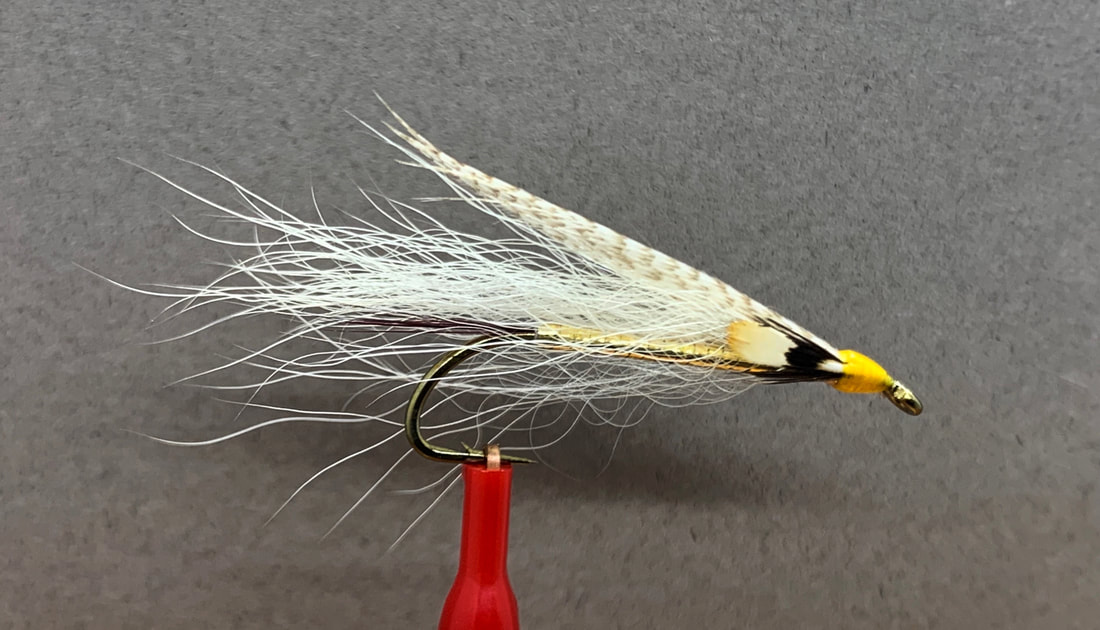
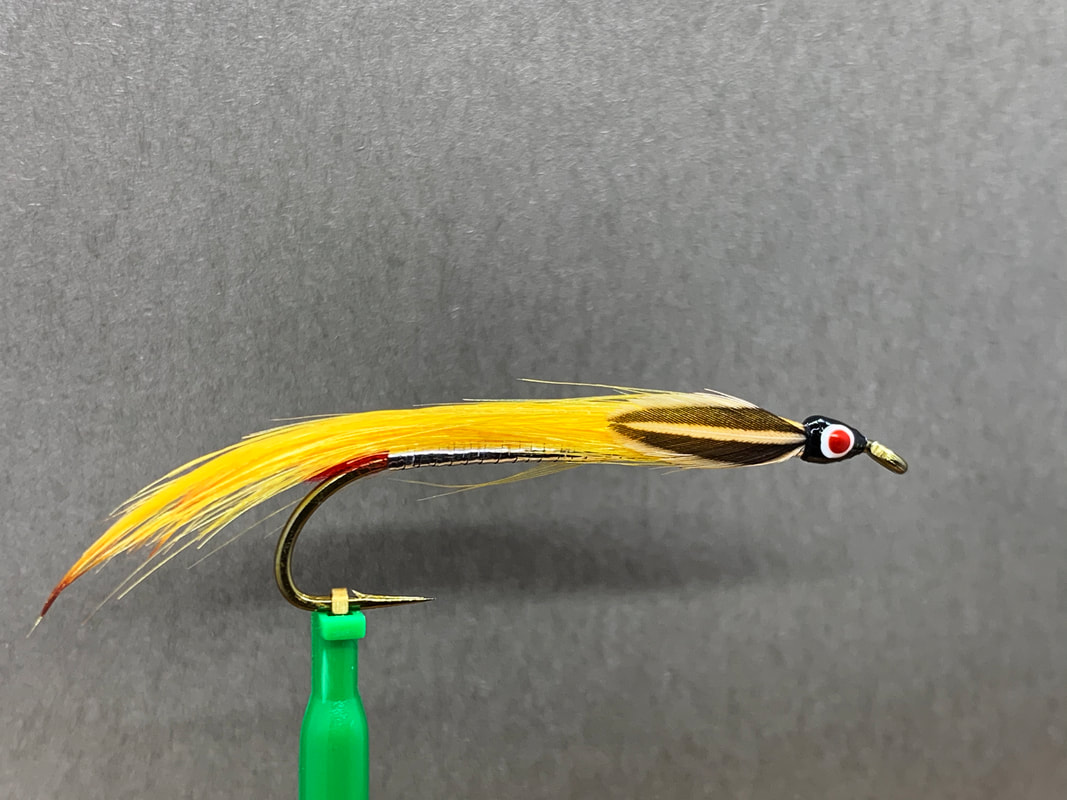
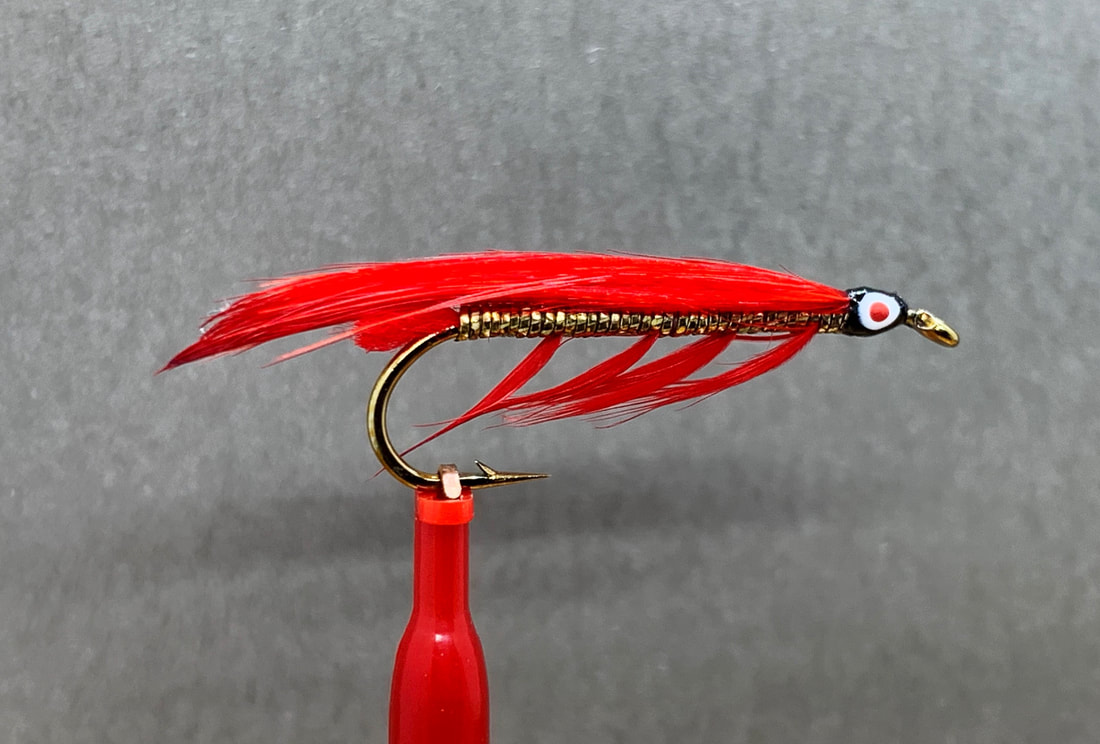
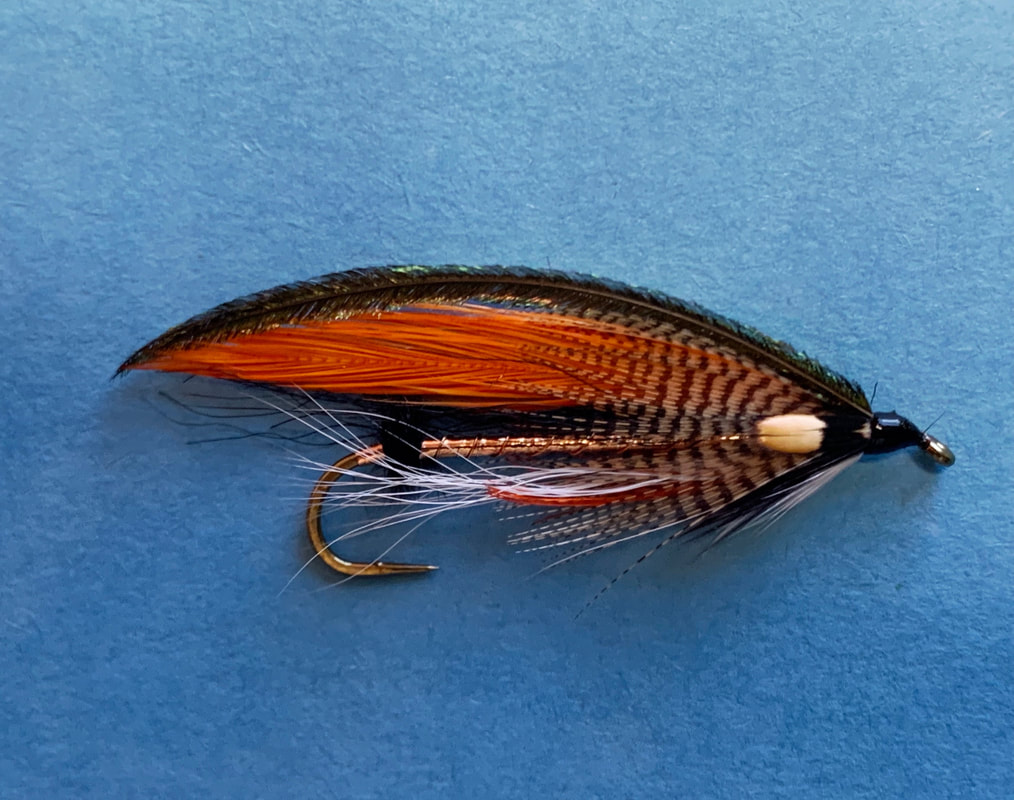
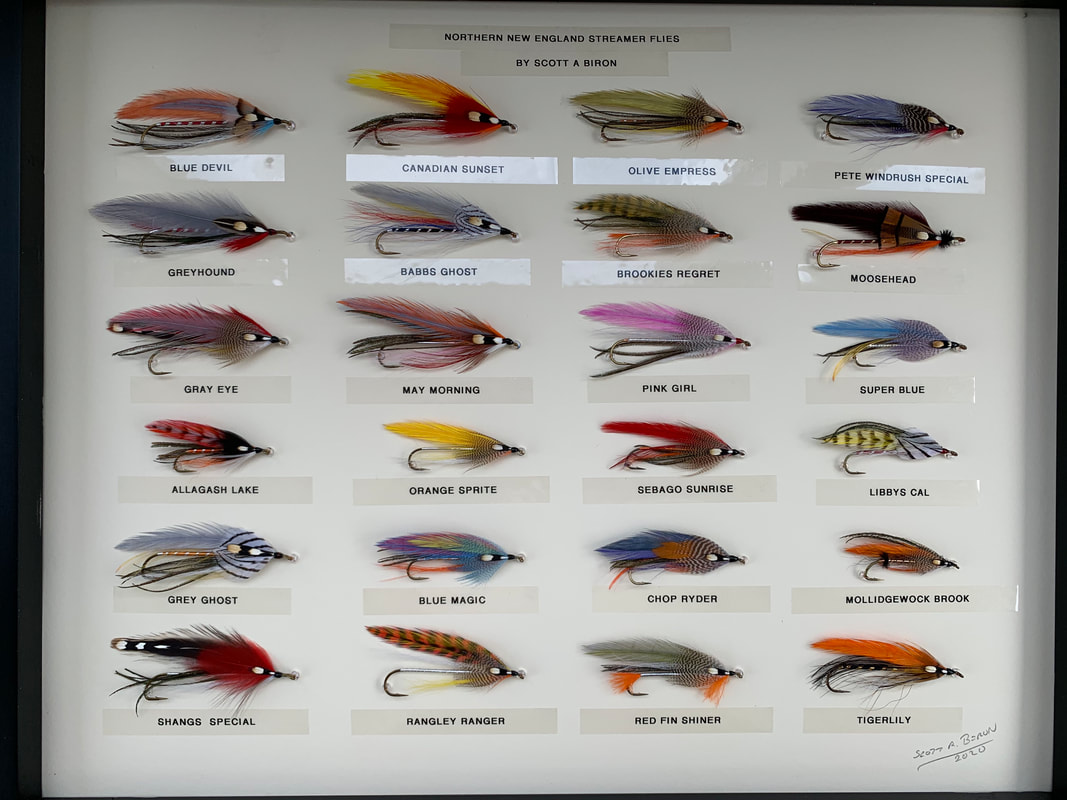
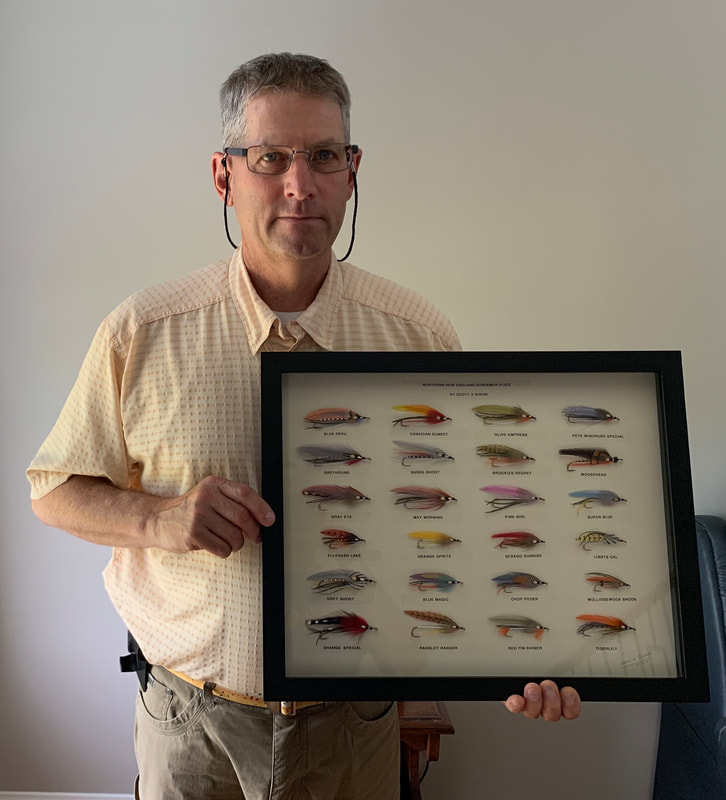
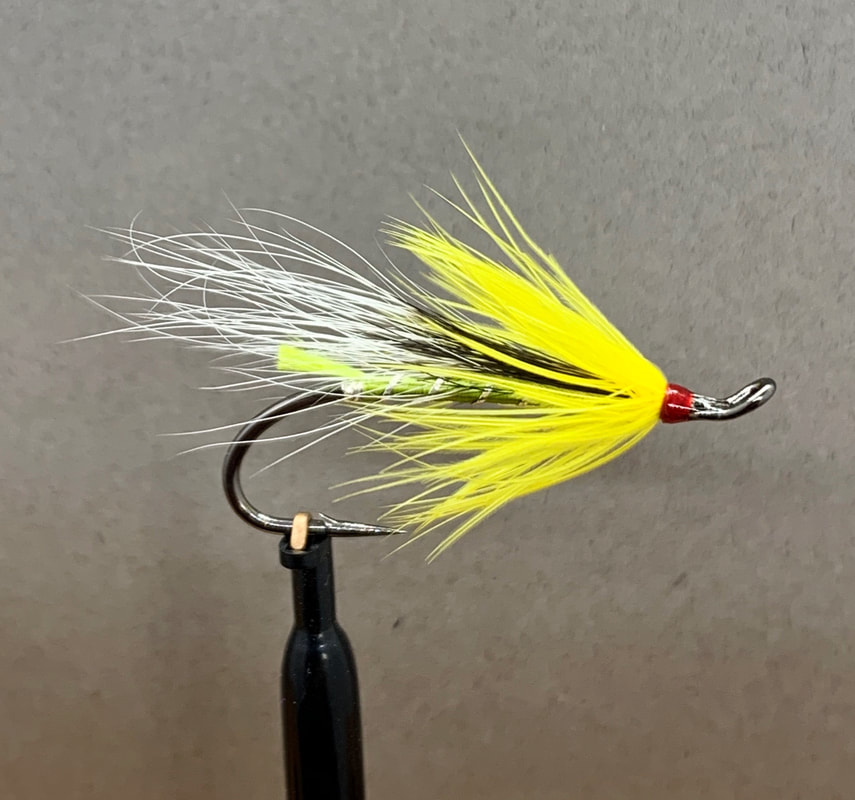
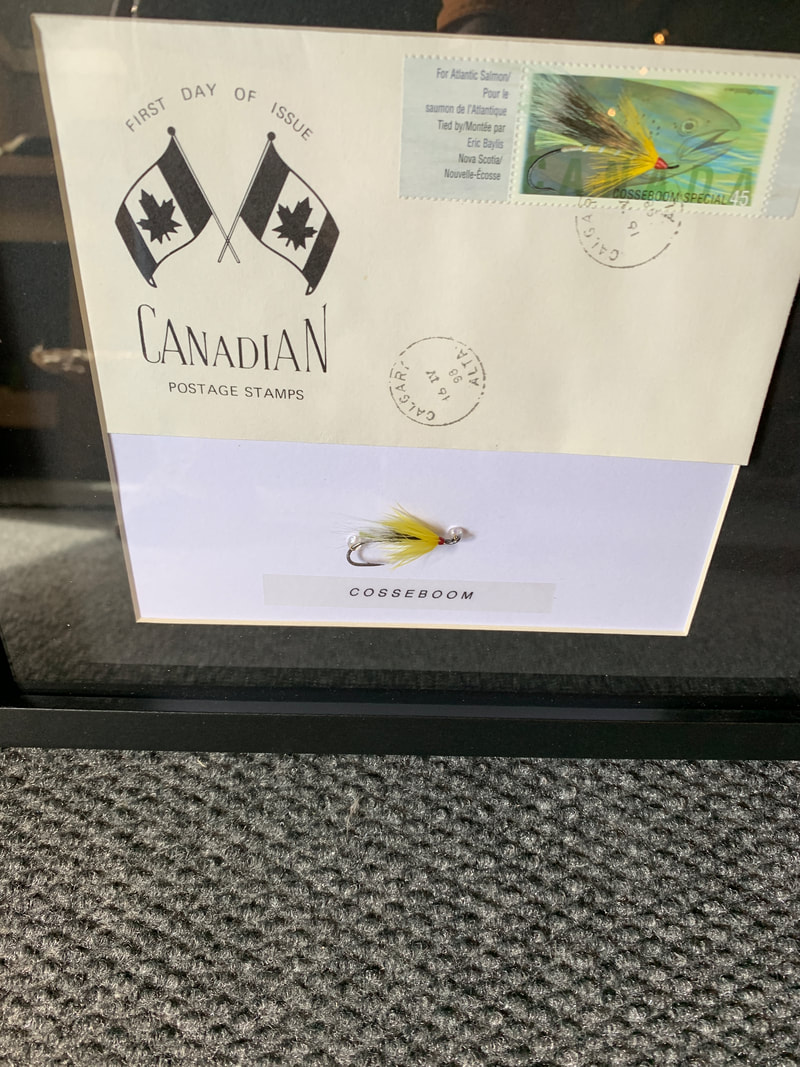
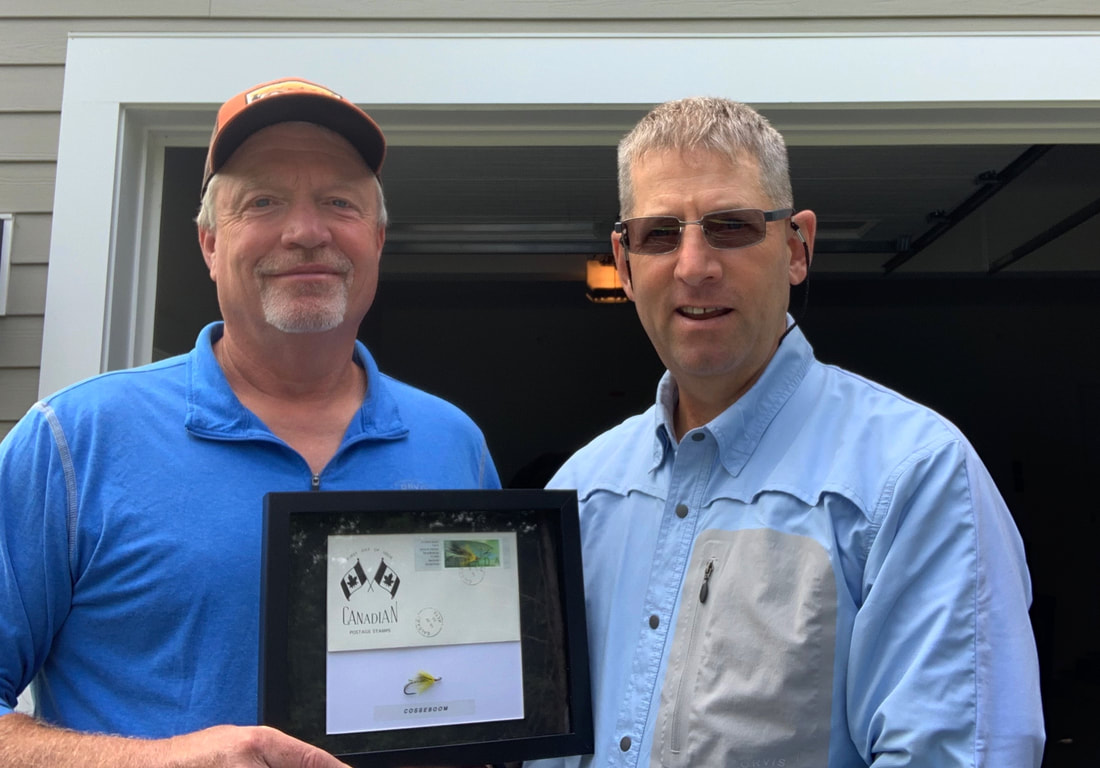
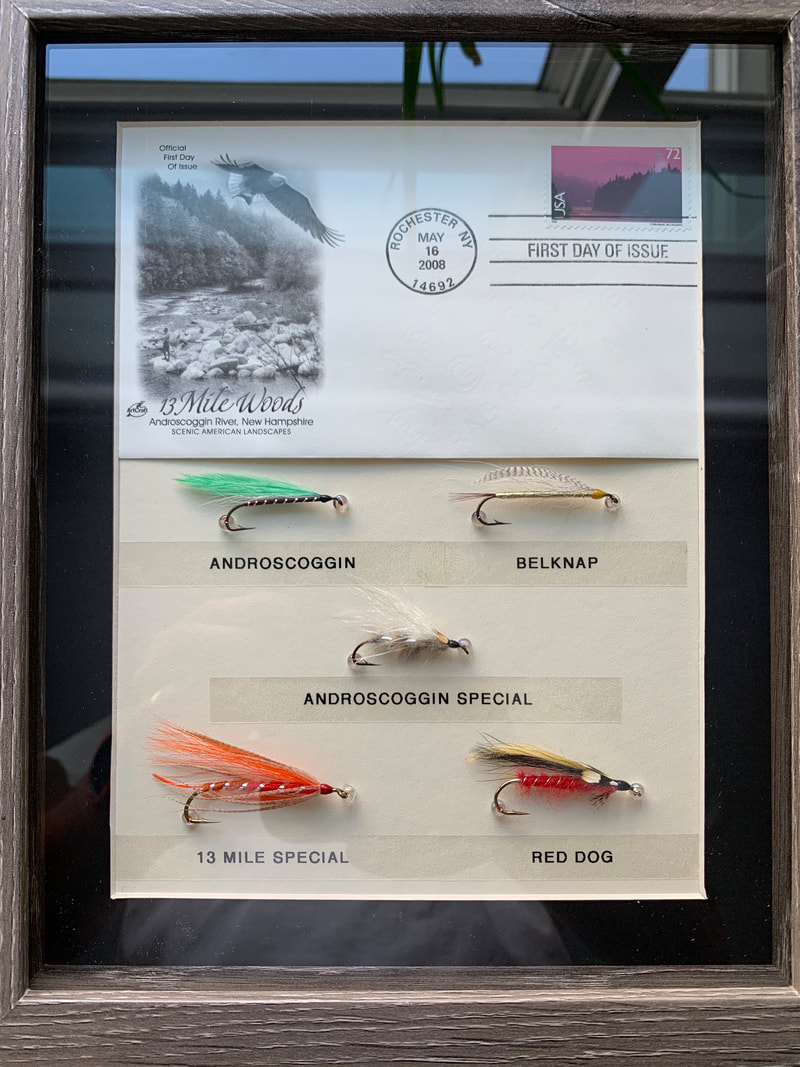
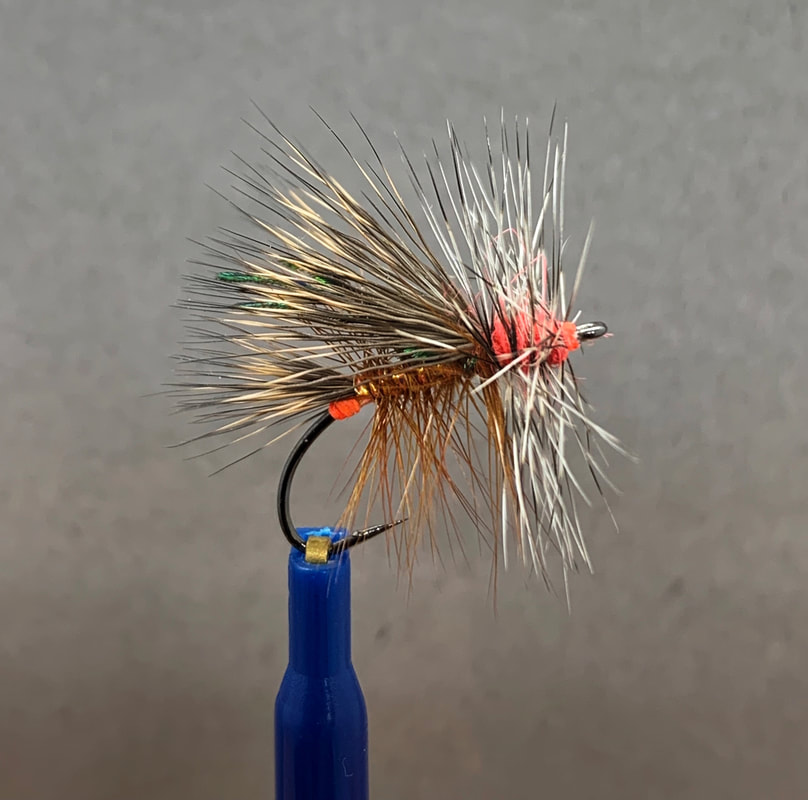
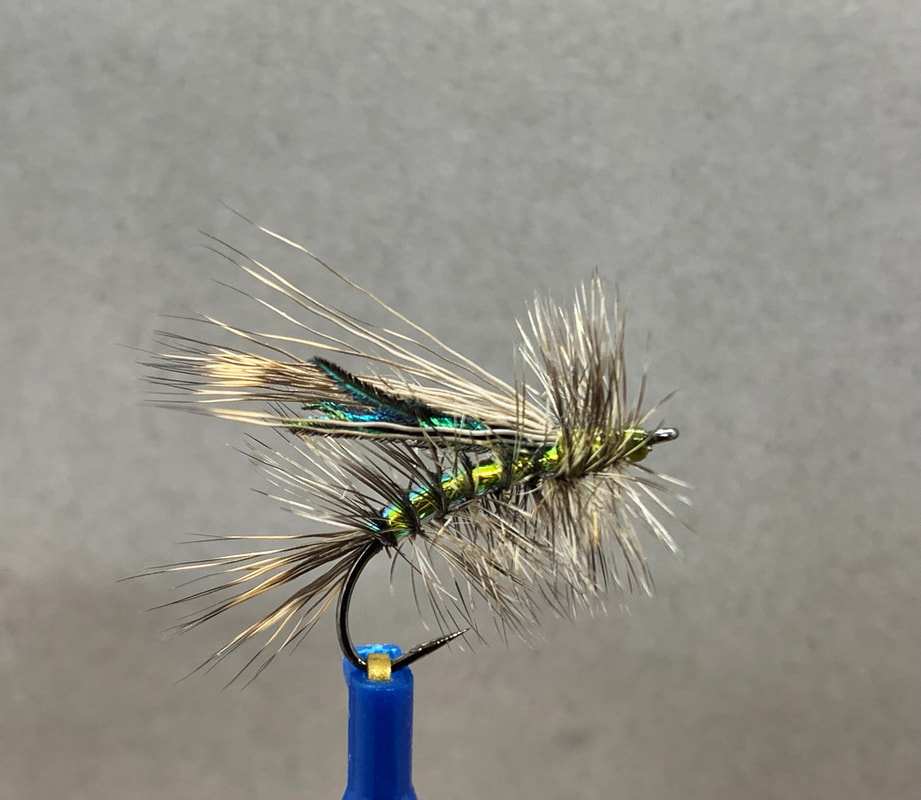
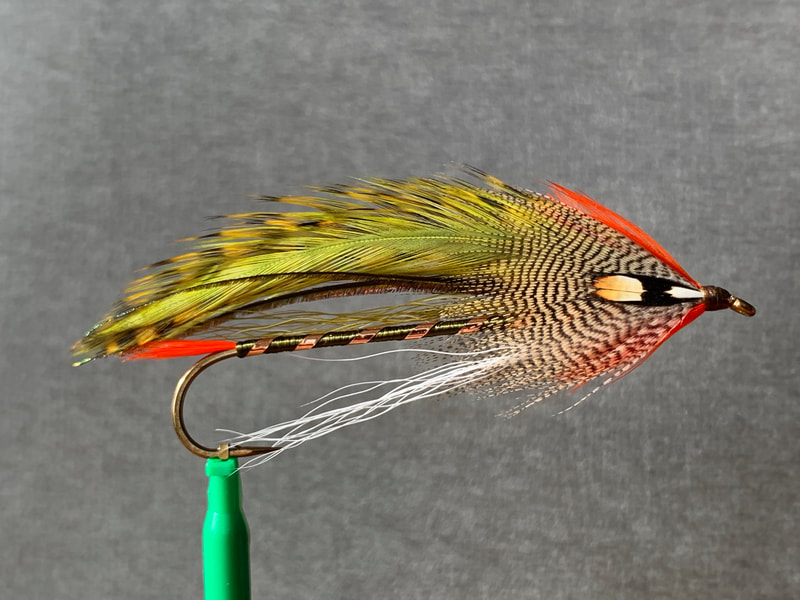
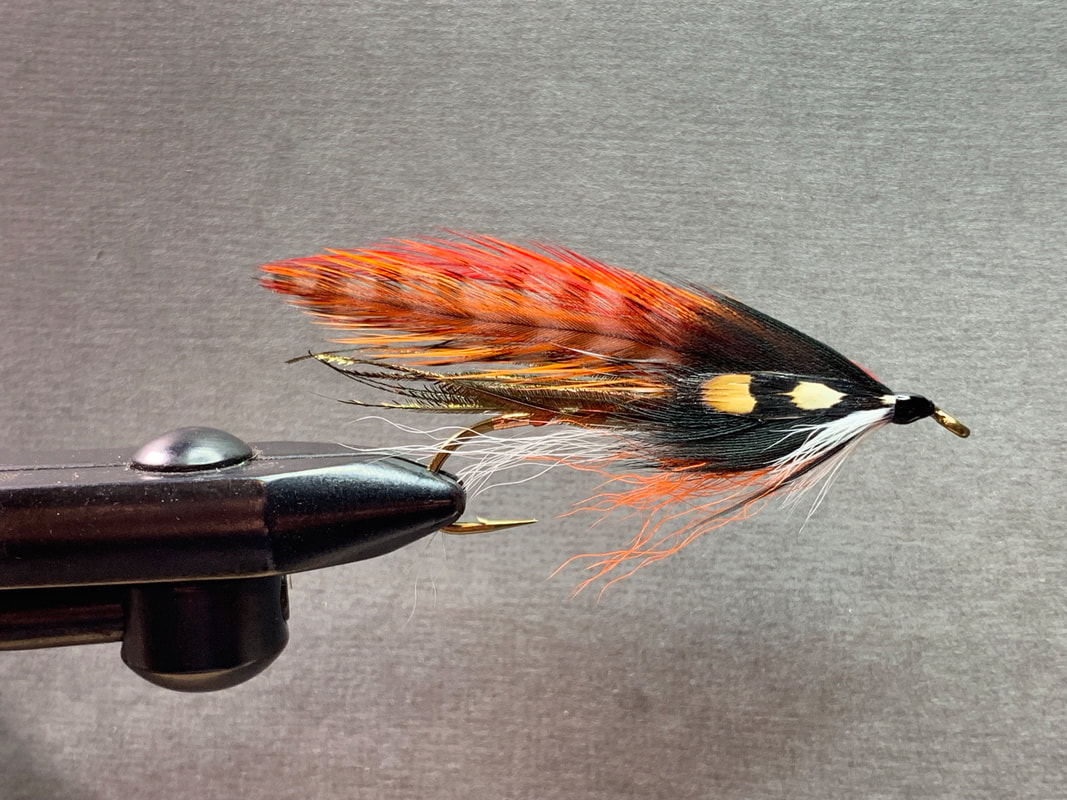
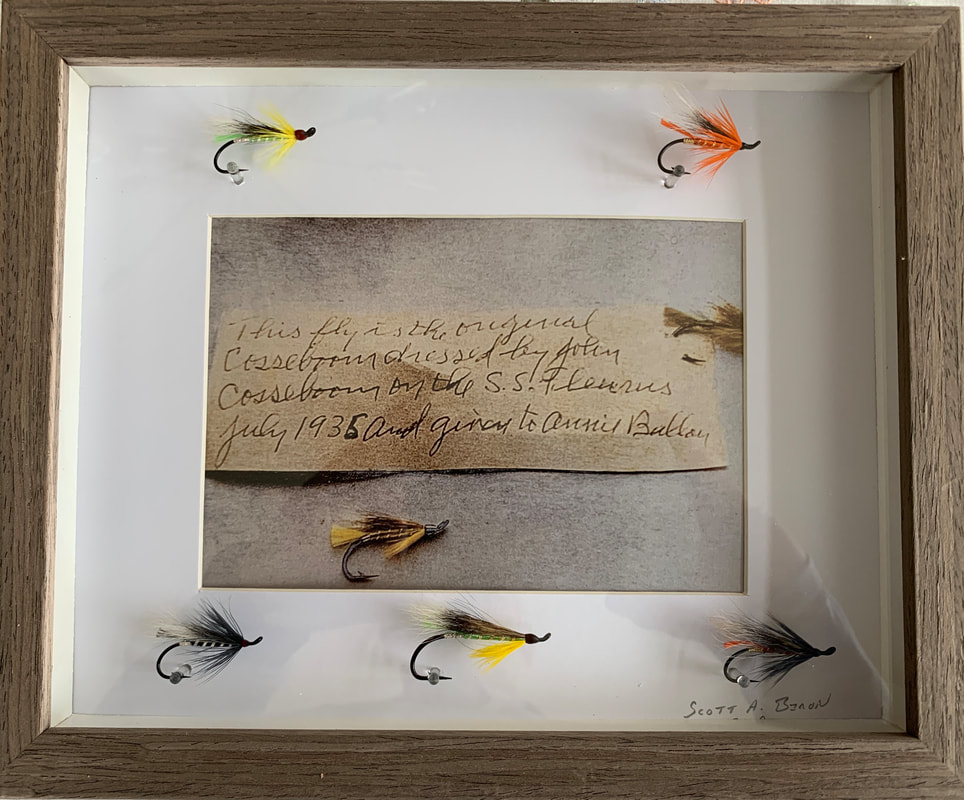
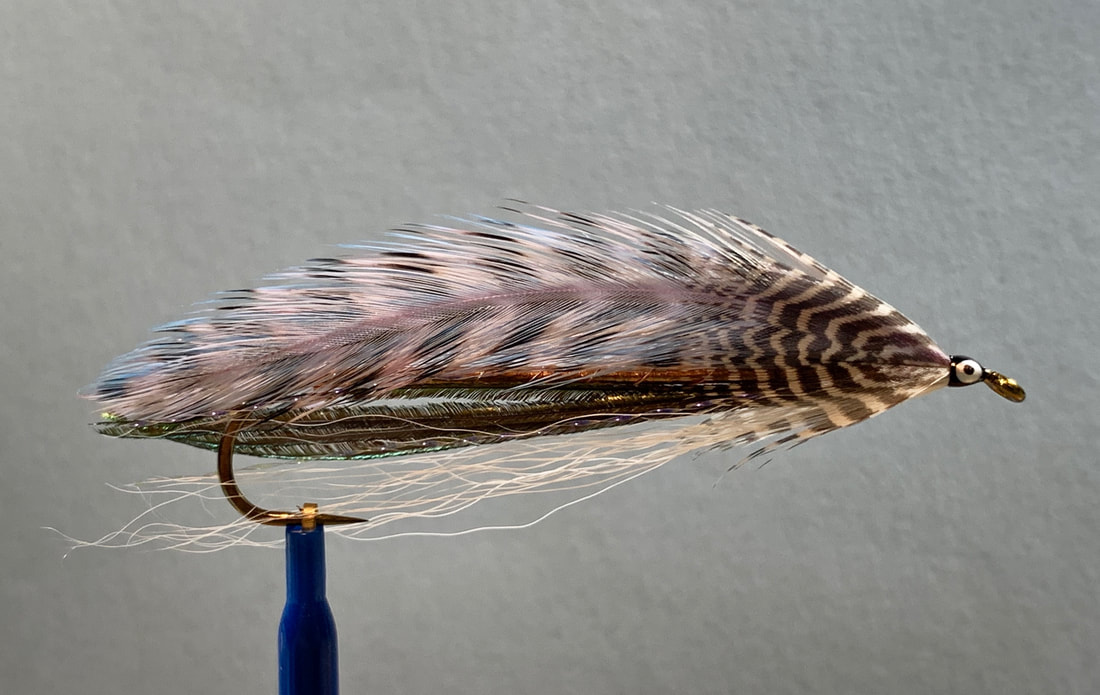
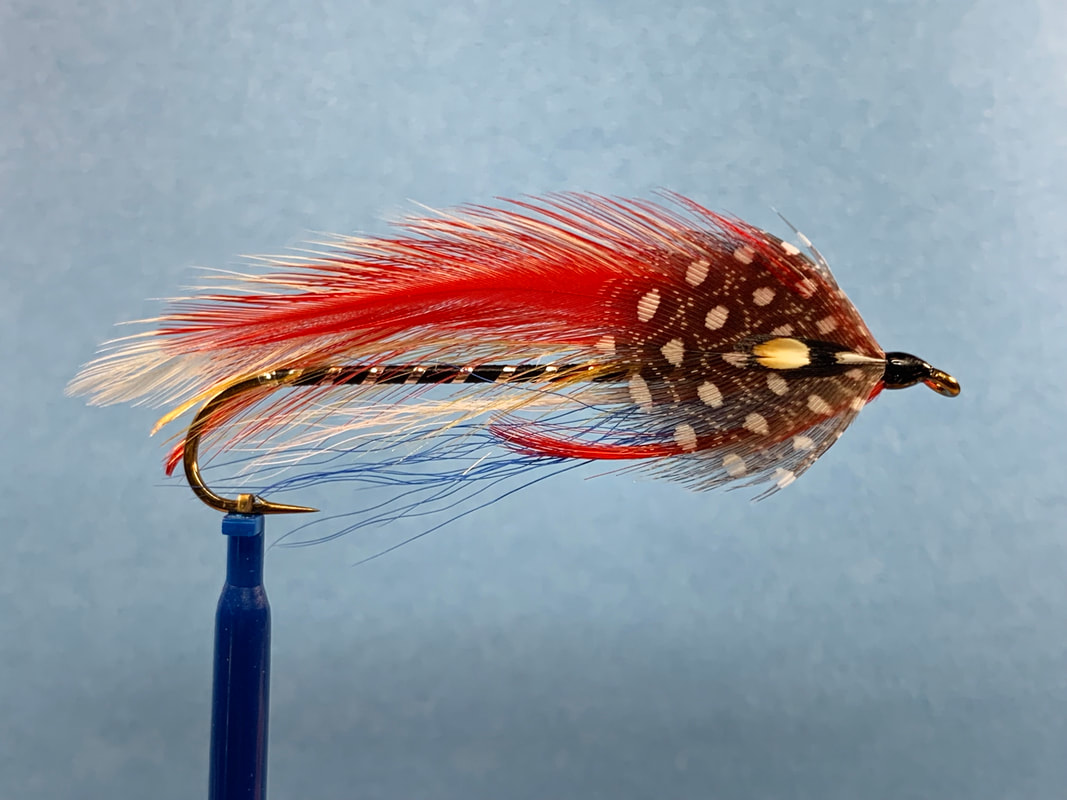
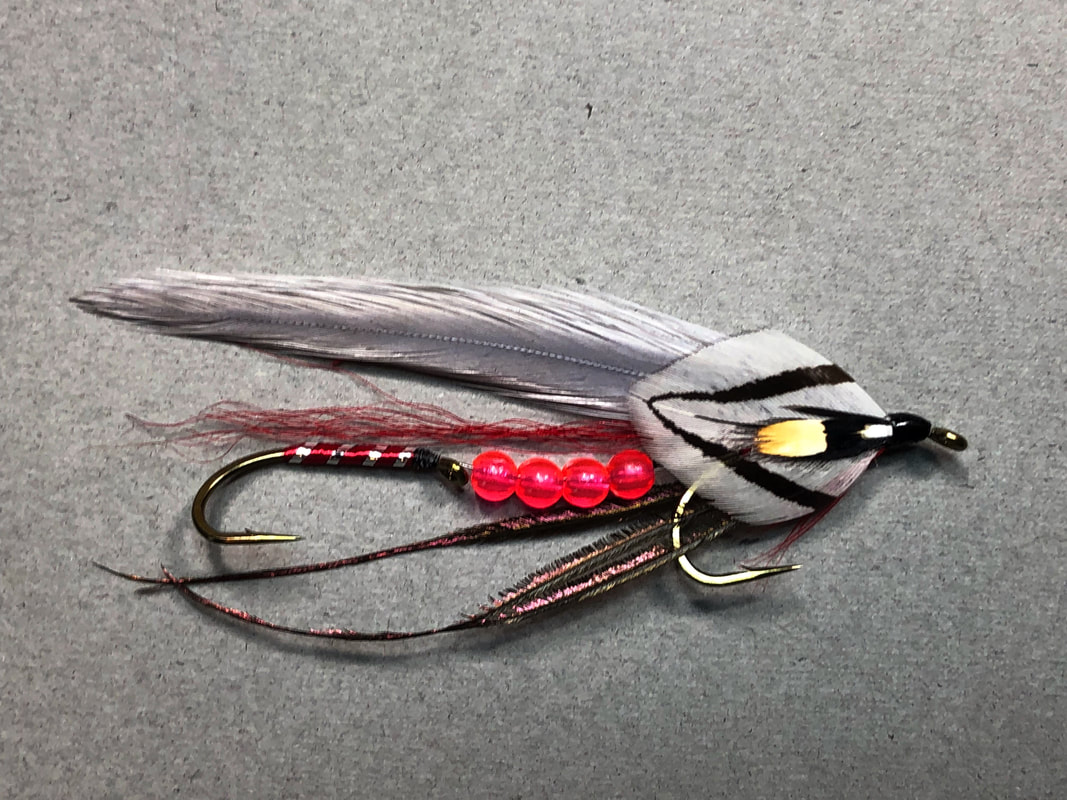
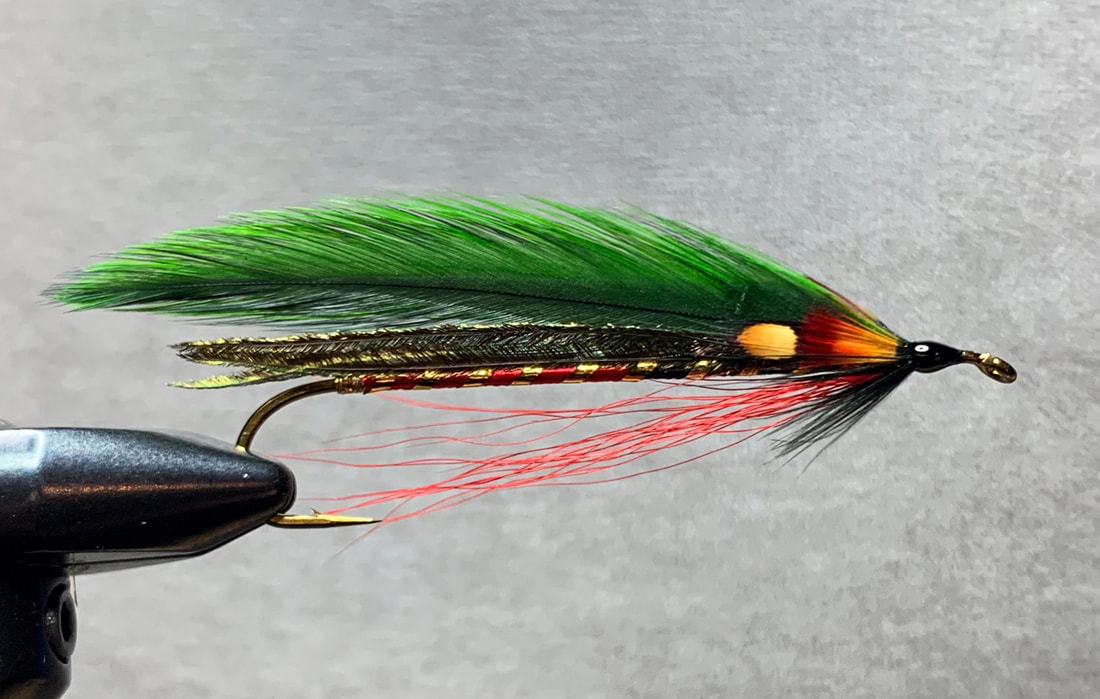
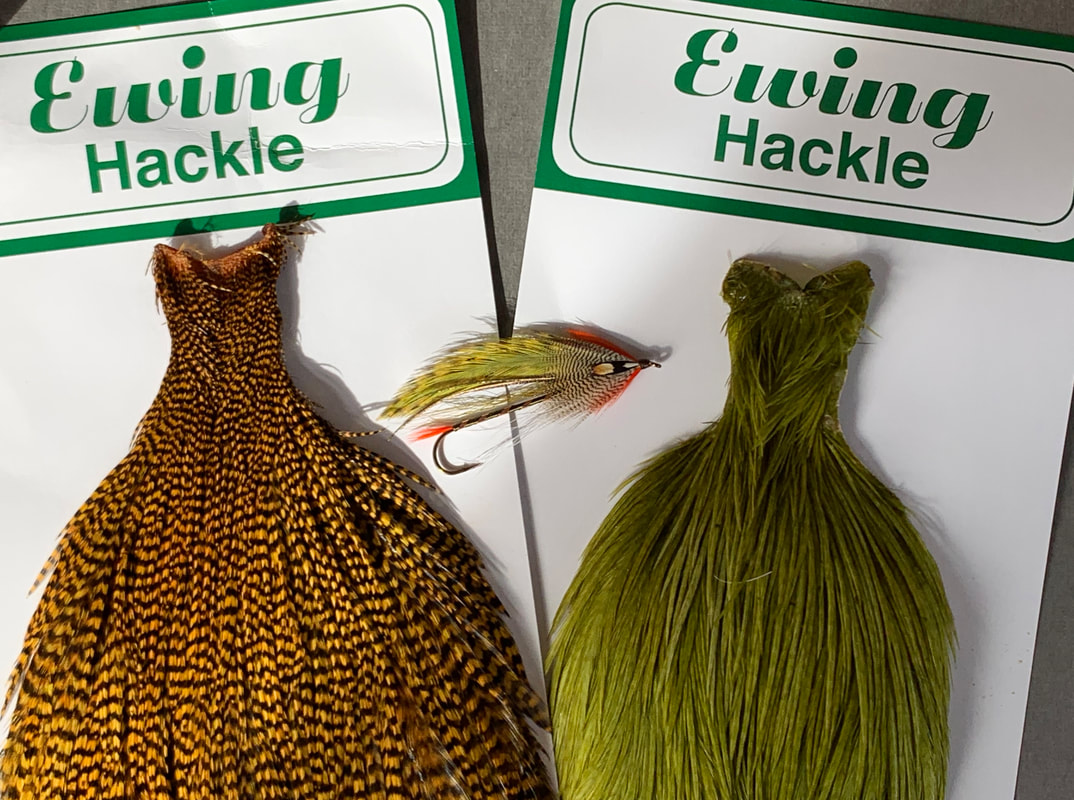
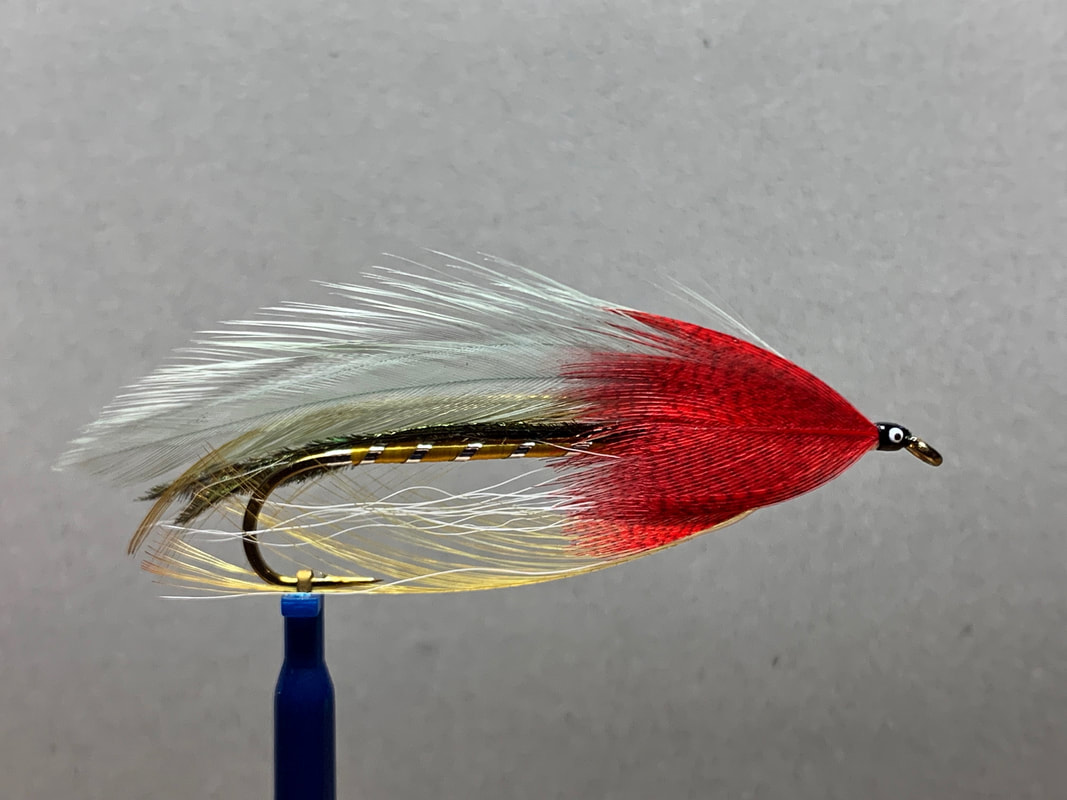
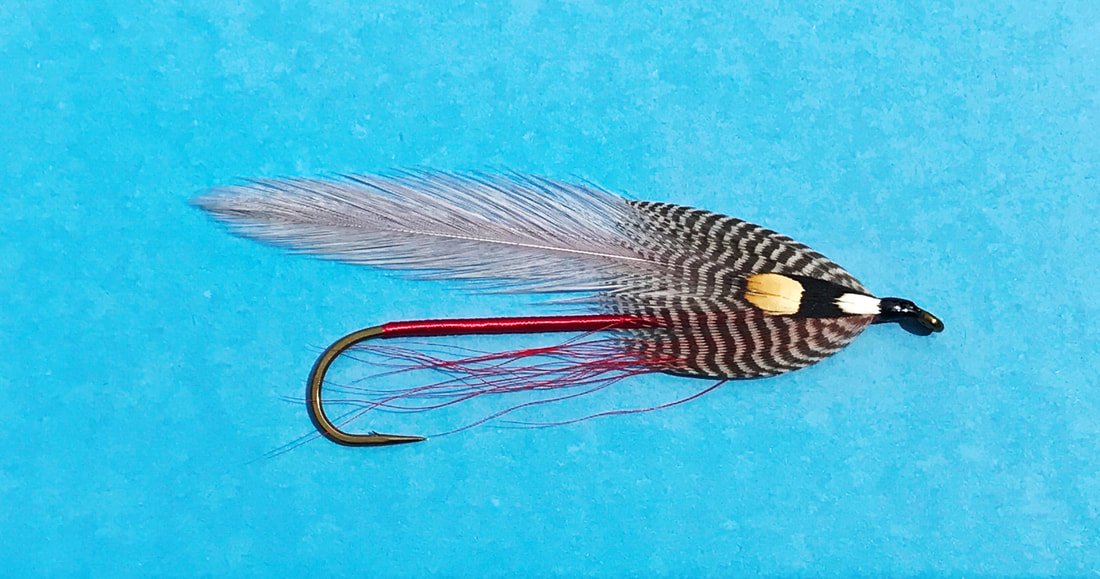
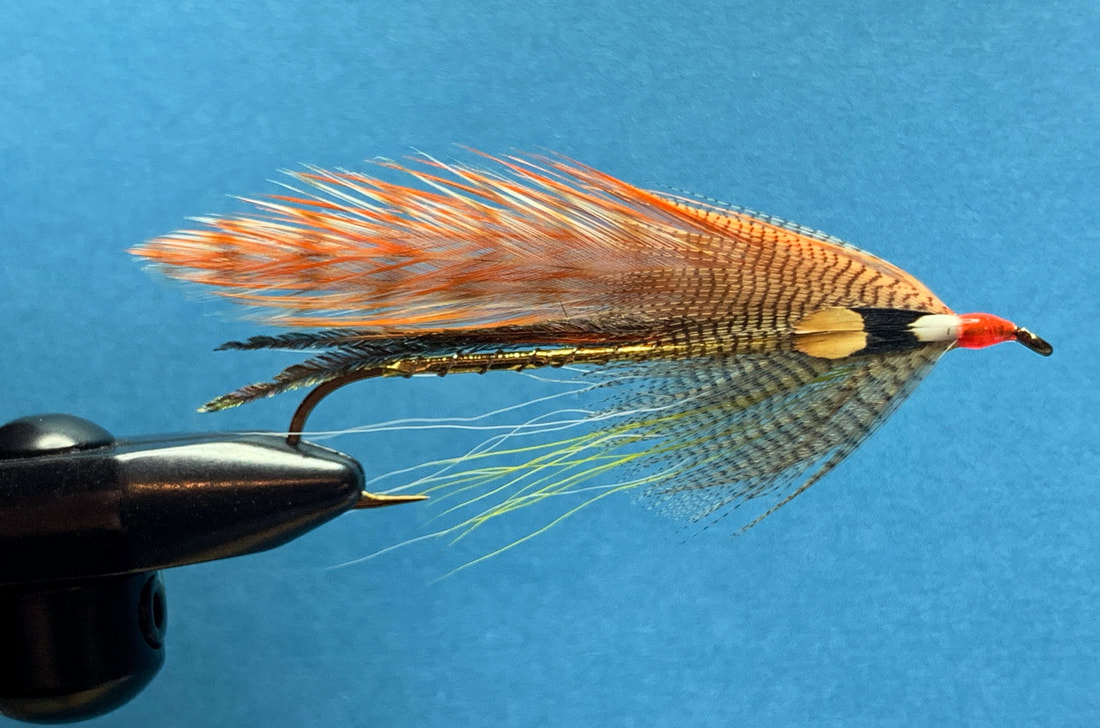
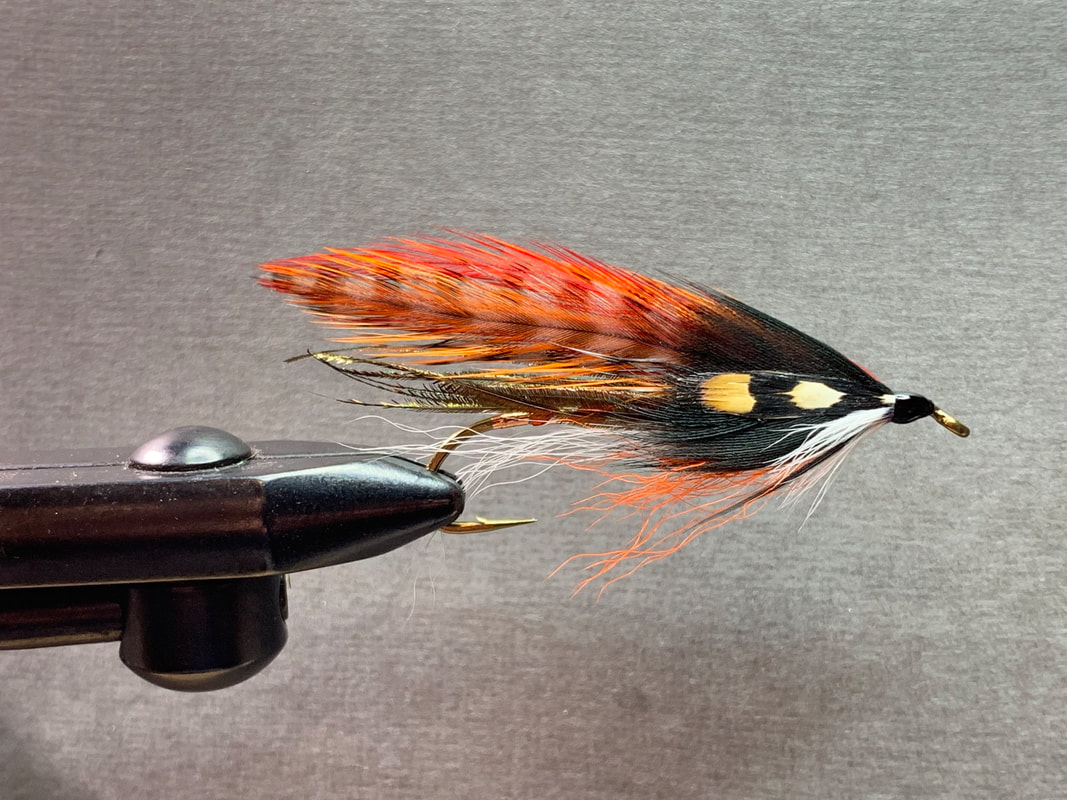
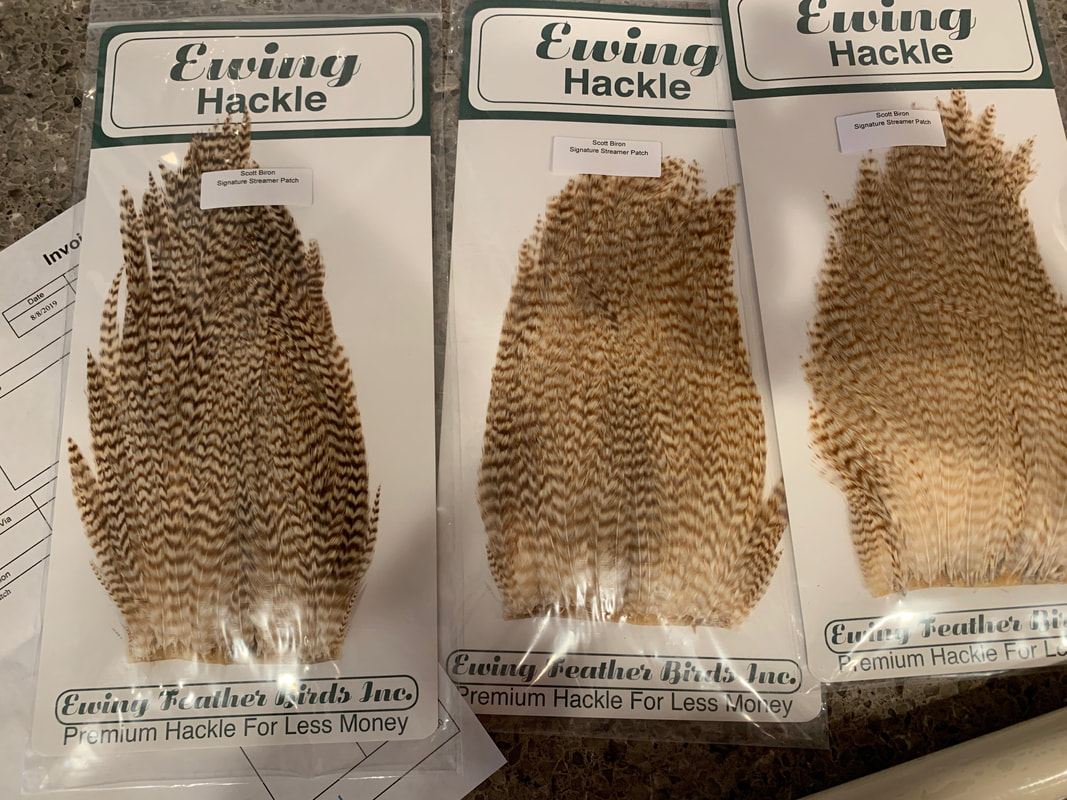
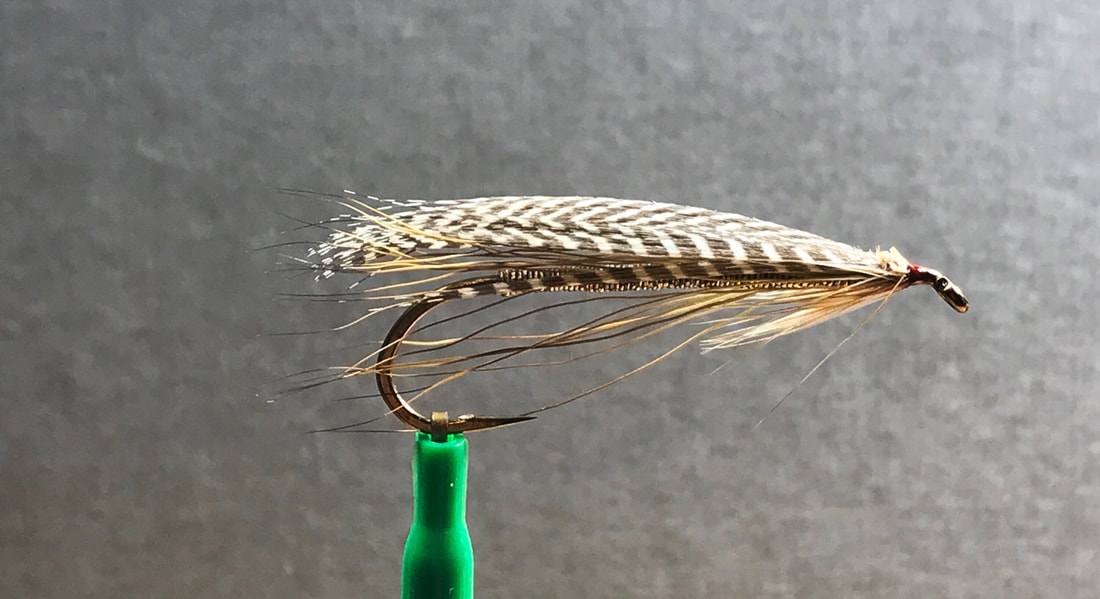
 RSS Feed
RSS Feed